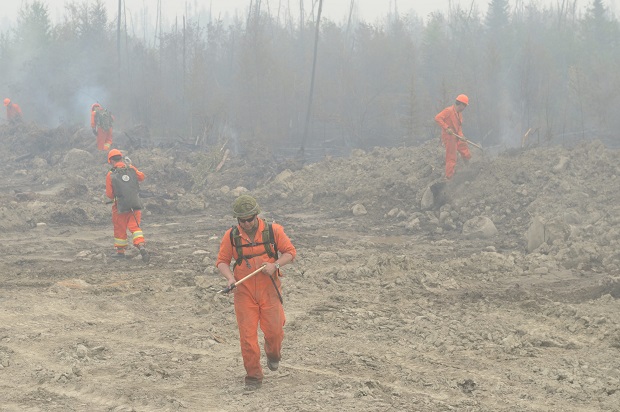Officials and first responders battling the raging wildfires in Fort McMurray are getting much-needed help from the Canadian Armed Forces.
Described by officials as “a beast,” and a “multi-headed monster,” the wildfires are spread over more than 10,000 hectares. It is reported to have destroyed more than 1,600 structures and has forced thousands of people to flee their homes. Dry forest conditions, strong winds and intense heat continue to fuel the fires. But it is not yet known what started the initial blaze.
Responding to Prime Minister Justin Trudeau’s offer of government’s “total support” in battling the wildfires and aiding residents of Fort McMurray escape to safety, the armed forces launched Operation Lentus 2016. Operation LENTUS can draw personnel and assets from across Canada, and may be drawn from any or all of the primary force-generators of the Canadian Armed Forces.
Four Royal Canadian Air Force CH-146 Griffon search and rescue helicopters from the Canadian Forces bases in Edmonton and Cold Lake and a handful of military personnel were dispatched to Fort McMurray on Wednesday afternoon as part of the armed forces’ efforts to help Fort McMurray residents devastated by wildfires that have been raging for several days now.
Watch one driver’s incredible videos of his exodus from a flaming Fort McMurray https://t.co/XR6s2zaAMQ pic.twitter.com/GO2LPi5m1W
— National Post (@nationalpost) May 5, 2016
As of yesterday, a C-130 Hercules and other aircraft from the 415 Combat Support Squadron, were placed on standby as well in Cold Lake as part of Operation Lentus 2016.
Resources for Fort McMurray evacuees and how you can help https://t.co/S4XJxRxxIR pic.twitter.com/u4erSURCd6
— CBC News (@CBCNews) May 5, 2016
The CAF is ready to provide support, as required, to the Province of Alberta in areas including:
- The provision of air assets to assist with the evacuation of persons in distress and individuals in affected and isolated areas,
- The provision of air assets to assist with the delivery of essential aid to affected areas, and
- The provision of air assets to assist with transport of essential firefighting equipment and personnel to, from, and within the affected area.
The military is currently working closely with provincial officials and first response teams to provide the needed assistance, according to Brig.-Gen. Wayne Eyre, commander of Joint Task Force West based in Edmonton.
Specialized abilities such as engineering, health services, force protection, transport, aviation or logistics may also be employed.
Once tasked, Canadian Joint Operations Command coordinates the personnel, vehicles, equipment, crews and aircraft to be employed in the region affected by the disaster, in coordination with the respective regional joint task force.

